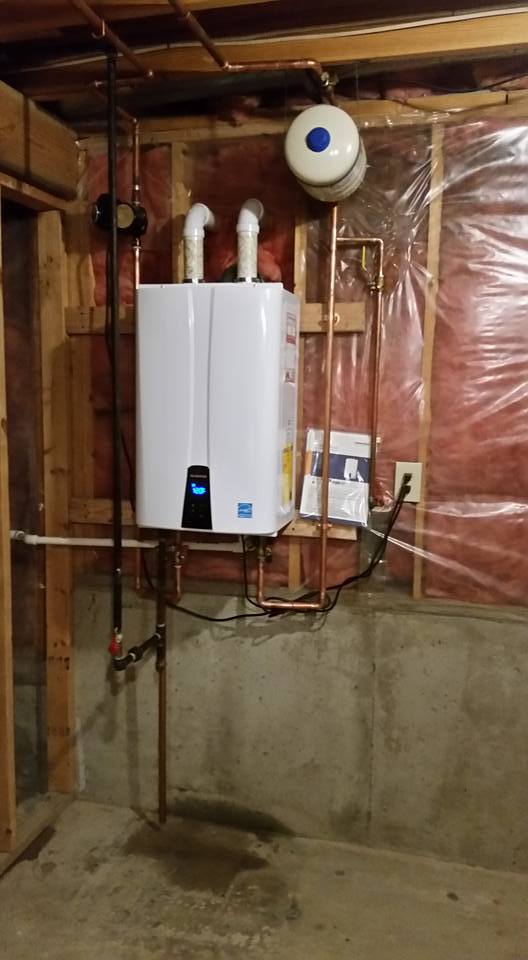Looking for water heater installation in Brea? Get fast and reliable results
Looking for water heater installation in Brea? Get fast and reliable results
Blog Article
DIY Water Heater Installation: Important Steps for Success
When taking into consideration a Do it yourself water heating unit installation, it is essential to come close to the job with a methodical frame of mind, as the procedure involves numerous essential steps that can dramatically affect both safety and performance. Selecting the suitable water heating system for your certain needs is simply the start; preparing the installation location and comprehending the required devices and materials are similarly vital.
Choosing the Right Hot Water Heater
When choosing a water heater, it is necessary to think about several crucial factors to ensure optimal performance and performance - water heater installation Yorba Linda. Assess the kind of water heater that ideal matches your needs. Choices consist of tankless, storage space tank, and heat pump water heating units, each offering distinctive advantages in terms of energy effectiveness and room demands
Next, examine the ability needed for your home. A bigger family members might require an unit with a higher gallon ability or a tankless system that can give continuous warm water. It's likewise critical to consider the energy source; usual choices consist of electric, natural gas, and lp. Each power kind has effects for setup costs and long-term energy costs.
Power performance is an additional important factor. By carefully assessing these aspects, you can choose a water heating system that lines up with your family's particular demands, making sure convenience and performance for years to come.
Tools and Products Needed
Effectively mounting a water heater needs not only the ideal choice of unit yet also the ideal tools and materials. Prior to starting your do it yourself project, guarantee you have a detailed list of products to assist in a smooth installment process.
Crucial tools consist of a pipe wrench, adjustable pliers, and a screwdriver set (both flathead and Phillips), which will certainly assist you take care of various installations and links. Additionally, a drill with appropriate little bits is required for placing braces or making any required openings. For safety and security, a voltage tester is important, specifically when dealing with electric water heating systems.
As for products, acquire Teflon tape to ensure watertight connections on threaded fittings. You will also need an adaptable water system line, which can be either knotted stainless-steel or PVC, relying on your choices and local codes. Don't fail to remember to equip up on installations, such as combinings and arm joints, to link the pipes securely. A pan or drip tray can aid take care of any kind of possible leaks, providing an added layer of safety. By collecting these materials and tools beforehand, you established the stage for an effective water heater setup.
Planning For Setup
Prior to beginning the installation of your water heater, it is essential to assess the installation website to guarantee it fulfills all needed requirements. Begin by verifying that the location is well-ventilated, specifically for gas water heating units, to avoid the build-up of hazardous gases. Look for the accessibility of necessary links, including water system lines and electric outlets, ensuring they remain in great condition and appropriately located.

This aggressive approach not only makes sure conformity with regional structure codes yet also improves the longevity and performance of the water heater. Appropriate prep work establishes the stage for a smooth setup procedure and aids prevent unexpected concerns.
Step-by-Step Setup Process
With the preparation complete and all necessary analyses carried out, the next stage entails the step-by-step installation of your water heating system. For tank-type water heating units, connect the chilly water supply line to the inlet, commonly marked in blue, and the hot water line to the electrical outlet, typically designated in red.
Next, safeguard the temperature level and pressure safety valve, which is crucial for safety. Affix the discharge pipe to this shutoff, guiding it in the direction of the floor or a suitable water drainage area. For electrical models, attach the power supply by stripping the cables and safeguarding them to the heating unit's terminals according click to read more to the supplier's directions.
If you are mounting a gas hot water heater, guarantee the gas line is attached correctly and examine for leaks making use of a soap option. After all links are made, load the tank with water prior to turning on the power or gas supply. Ultimately, enable the hot water heater to get to the desired temperature and look for any kind of leakages around all connections.
Ensuring Safety And Security and Effectiveness
Frequently guaranteeing safety and security and effectiveness during the installment and operation of your hot water heater is vital for optimum performance and durability. Begin by selecting an appropriate area that abides by regional building ordinance and supplies adequate ventilation. Ensure that the location is without flammable products and has enough room for upkeep and evaluations.

After installation, conduct regular checks on the unit to spot leakages, deterioration, or uncommon sounds. Set the thermostat to a risk-free temperature, commonly around 120 ° F, to stop scalding and boost energy performance. Insulate pipelines to reduce heat loss, which adds to decrease energy costs.
Conclusion
To conclude, successful DIY hot water heater installment depends upon cautious planning and execution. Choosing the appropriate hot water heater, preparing the installment area, and complying with a systematic setup procedure are critical steps. Complying with security guidelines throughout the setup ensures both safety and efficiency. In addition, normal upkeep checks post-installation will certainly add to the optimal efficiency of the water heating system, ultimately boosting the durability and performance of the system. visit this site Appropriately establishing the thermostat additionally makes sure risk-free procedure.
When thinking about a DIY water heater setup, it is necessary to approach the task with a systematic way of thinking, as the process involves numerous crucial steps that can dramatically affect both safety and security and effectiveness.Before starting the installment of your water heating unit, it is crucial to assess the installment site to ensure it satisfies all needed requirements. For tank-type water heating systems, link the chilly water supply line to the inlet, typically noted in blue, and the warm water line to the outlet, typically designated in red.Regularly guaranteeing security and performance throughout the installation and procedure of look at this site your water heater is important for ideal performance and long life. Selecting the ideal water heating system, preparing the installment area, and adhering to an organized setup procedure are important actions.
Report this page